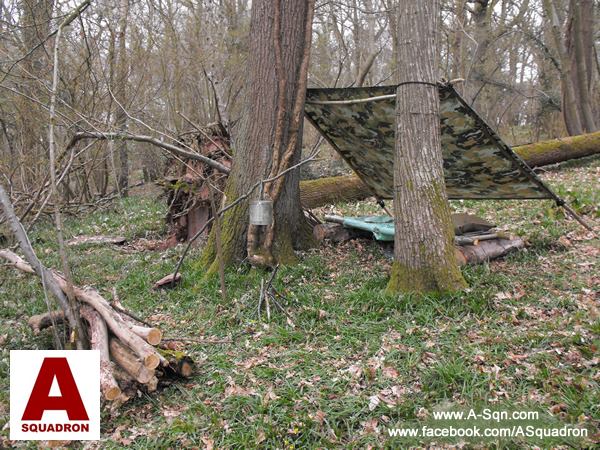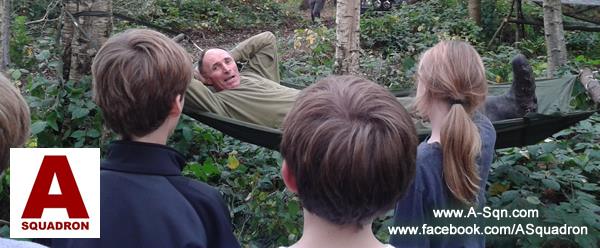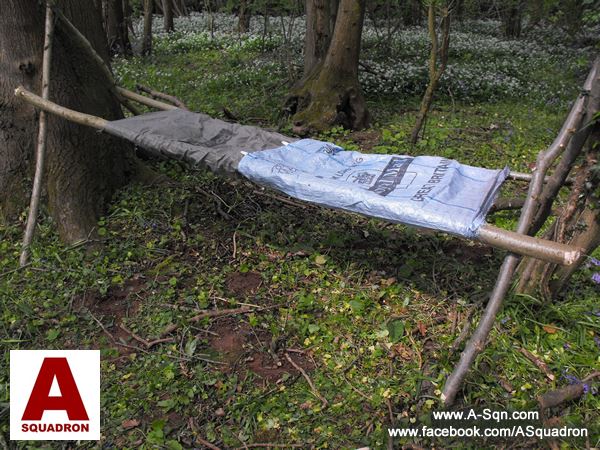Shelter Is An Essential For Survival
In this article from ex SAS soldier Bob Podesta, we learn about shelters and keeping ourselves protected from the elements. It’s fair to say know’s what he’s talking about when it comes to Survival and adventuring around the world.
Here at Outdoor Revival HQ we’re excited to be publishing another of Bob’s articles, watch out for more from Bob Podesta on Outdoor Revival
Even though Bob is based in the UK but the principles and tips are universal and valid no matter who you are or where you are.
Should you find yourself in a survival situation which necessitates you being in the wilds for an extended period of time then before you think about water and food, you must first turn your attention to shelter. Particularly if you are in an extreme climate your biggest enemy will be the elements, whether hot or cold.
A cornerstone to survival is to remain calm, slow down and work as steadily and methodically as you can. This ensures that you do not burn valuable calories needlessly, overheat, make costly mistakes etc. When it comes to shelter the key is ‘expediency’. Do not waste time and precious energy to build a shelter if you don’t need to. Therefore look for a natural shelter that will, if possible,: –
- Afford you shelter from the hot sun
- Keep you protected from cold/icy winds
- Keep you dry
- Offer protection from possible predators
- Locate you near, but not directly next to, a water source
If you cannot find an ‘expedient shelter’, then you must do the next best thing and use the resources on and around you to best effect.
Think carefully when locating your shelter, e.g. don’t build your shelter at the top of a hill where you will be exposed to the wind when you can instead use the hill to help shelter you by building below the ridgeline.
Use large trees or rocks to act as windbreaks and form the starting point of your shelter. One word of warning – always check above you before positioning your shelter to ensure you are clear of any deadfall from above.
A lightweight army shelter sheet/tarpaulin is a really useful item to carry in your backpack. It can be folded down very small and with just two sticks and some cord can be used to create a simple, but effective, ‘Ridge shelter.’

Depending on your location and how long you expect to be in situ more elaborate shelters can be made using a combination of the shelter sheet along with branches, leaves, moss, reeds, etc. While nettle and plant fiber cordage can be gathered and produced, your shelter building will be made significantly easier if you carry your own string or cord with you. Bob advises carrying plenty of paracord on your person at all times.
“When I was in the army I would replace my boot laces with paracord and wrap the excess around my ankles. I always had paracord on my belt-kit and attached to my knife and machete.” The cord can be used for a multitude of survival tasks so make sure you include it in your kit bag.
Once your shelter is up you will need a comfortable place to sleep. You might be ‘roughing it’ but there is no point sleeping on a cold hard floor if you don’t have to.
A good night’s sleep will save and restore your energy and help you function better. Keeping off the floor is important as it will keep you away from a host of bugs, insects and creatures and your valuable body heat will not be drained away by the cold ground below.
A piece of army kit that Bob wouldn’t do without unless he really had to is his trusty “hammock-stretcher-lightweight.” As its name implies, it can be used as both a hammock and stretcher. “I’ve spent many comfortable nights under the canopy in my hammock listening to the rain and jungle noises.
I’ve always slept really well in my hammock (see photo) or pole bed, and it makes a real difference if you can start the day having had a good night’s sleep behind you.”

A pole bed can also be made by using any strong fabric, zipped-up jackets, or as shown in the photos, old mail bags, by inserting two long sturdy poles inside the loops of material and stretching them over A-frames or on logs off the ground.

Experiment with ideas in your garden or local woods. Have a night camping under the stars without your usual commercial tent. Get outside and have some wild fun this year.
Until next time this is ‘A’ Squadron signing out.
Bob Podesta ‘A’ Squadron Ltd
If you want to know more about Bob and A-Squadron here’s a few links:
website www.a-sqn.com facebook www.facebook.com/asquadron twitter www.twitter.com/a_squadron
If you have any comments then please drop us a message on our Outdoor Revival facebook page
If you have a good story to tell or blog let us know about it on our FB page, we’re also happy for article or review submissions, we’d love to hear from you.
We live in a beautiful world, get out there and enjoy it.
Outdoor Revival – Reconnecting us all with the Outdoor





